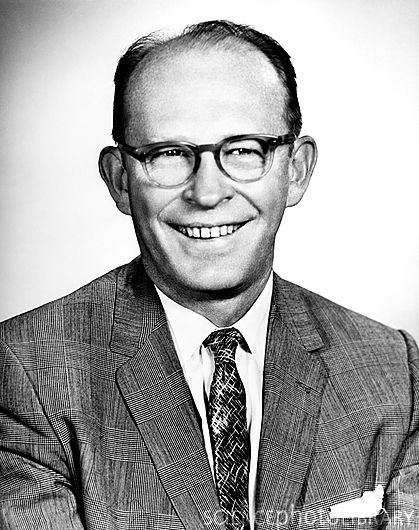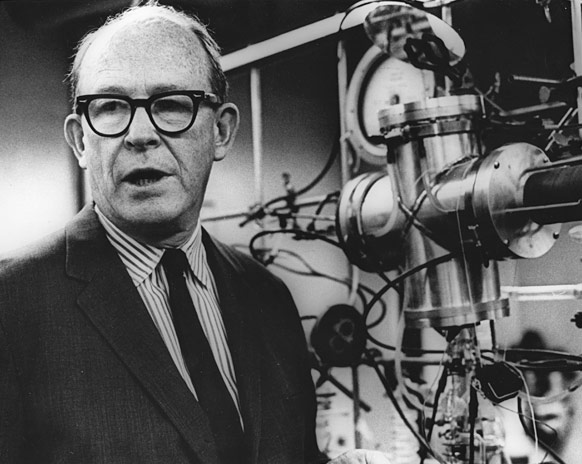<Back to Index>
- Chemist Willard Frank Libby, 1908
- Writer Thomas Chandler Haliburton, 1796
- Co-founder of the Pasteur Institute Pierre Paul Émile Roux, 1853
PAGE SPONSOR


Willard Frank Libby (December 17, 1908 – September 8, 1980) was an American physical chemist noted for his role in the 1949 development of radiocarbon dating, a process which revolutionized archaeology.
Libby was born in Grand Valley, Colorado. He received his B.S. in 1931 and Ph.D. in 1933 in chemistry from the University of California, Berkeley, where he then became a lecturer and later assistant professor. Libby spent the 1930s building sensitive geiger counters to measure weak natural and artificial radioactivity. In 1941 he joined Berkeley's chapter of Alpha Chi Sigma.
Awarded a Guggenheim Fellowship, he spent most of 1941 at Princeton University. After the start of World War II, he worked on the Manhattan Project at Columbia University with Nobel laureate chemist Harold Urey. Libby was responsible for the gaseous diffusion separation and enrichment of the Uranium - 235 which was used in the atomic bomb on Hiroshima.
In 1945 he became a professor at the University of Chicago. In 1954, he was appointed to the U.S. Atomic Energy Commission. In 1959, he became Professor of Chemistry at University of California, Los Angeles, a position he held until his retirement in 1976. He taught honors freshman chemistry from 1959 to 1963 (in keeping with a University tradition that senior faculty teach this class). He was Director of the University of California statewide Institute of Geophysics and Planetary Physics (IGPP) for many years including the lunar landing time. In 1966 he married his second wife Leona Woods Marshall, an original experimenter on the world's first nuclear reactor and a UCLA professor of environmental engineering. He also started the first Environmental Engineering program at UCLA in 1972.
In 1960, Libby was awarded the Nobel Prize in Chemistry for leading the team (namely, post - doc James Arnold and graduate student Ernie Anderson, with a $5,000 grant) that developed Carbon - 14 dating. He also discovered that tritium could be used for dating water, and therefore wine.
He attended Analy High School in Sebastopol, California. The school library has a mural of Libby, and a nearby highway is named in his honor.
During his time in the New York City area, Libby was a resident of Leonia, New Jersey.